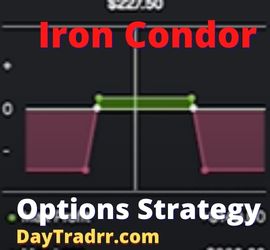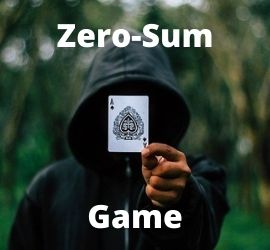What Is an Iron Condor Options Strategy?
 An iron condor is the combination of a bullish and bearish vertical spread on the same underlying asset. It is made up of two call options (one long and one short) and two put options (one long and one short). Each of the options has a different strike price but the same expiration date. The strategy can be built as a long Iron Condor, where the trade generates a net debit. However, it is more commonly used as a short Iron Condor, where the transaction generates a net credit. A net credit indicates that the four options contracts brought in more money than the investor had to payout.
An iron condor is the combination of a bullish and bearish vertical spread on the same underlying asset. It is made up of two call options (one long and one short) and two put options (one long and one short). Each of the options has a different strike price but the same expiration date. The strategy can be built as a long Iron Condor, where the trade generates a net debit. However, it is more commonly used as a short Iron Condor, where the transaction generates a net credit. A net credit indicates that the four options contracts brought in more money than the investor had to payout.
As an options trading strategy, a short iron condor gets the most profit when the underlying stock closes at expiry between the middle strike prices and all four options expire worthlessly. In other words, the idea is to profit from the underlying asset’s low volatility and pocket the premiums as profit. The iron condor has a similar reward as a standard condor spread. However, instead of only calls or only puts, it uses both calls and puts. The condor and the iron condor are both extensions of the butterfly spread and the iron butterfly.
The Iron Condor – A Closer Look
The iron condor strategy limits upside and downside risk. This is because the high and low strike options, called the wings, protect against significant moves in either direction. However, limiting the risk also restricts the potential profits. Ideally, the trader would like all of the options to expire worthlessly. This is only possible if the underlying asset closes between the middle two strike prices at the expiry date.
Iron Condors are risk-defined, neutral strategies with limited profit potential. They work well for stocks that are projected to have moderate volatility. In other words, stocks that do not see major price fluctuations in either direction. The approach seeks to capitalize on a decrease in implied volatility in the options as well as time decay. An iron condor might be thought of as a long strangle inside a larger, short strangle—or vice versa.
The short iron condor is formed by combining two vertical spreads – a bull call spread and a bear put spread. As a result, this strategy comprises four distinct option contracts on the same stock. Each, however, has the same expiration date. The spread credit that results sets the maximum profit for the trade. The maximum risk is defined as the spread width minus the credit obtained.
Iron Condor Profits and Losses
The amount of premium or credit received for initiating the four-leg options position is the maximum profit for an iron condor. However, the maximum loss is capped. It amounts to the difference between the long call and short call strikes, or the long put and short put strikes. To calculate, reduce the loss by the net credits obtained, then add commissions to determine the overall loss for the trade. If the price moves above the long call strike, which is higher than the sold call strike, or below the long put strike, which is lower than the sold put strike, the maximum loss occurs.
The options that are further out of the money (OTM) are called the wings. Both are long positions. Because both of these options are further out of the money, their premiums are smaller than those of the two written options. This results in a net credit to the account when the trade is executed. By using multiple strike prices, the strategy can be made to lean bullish or bearish. For example, if both of the middle strike prices are higher than the underlying asset’s current price, the trader anticipates a slight increase in its price by expiration. In any scenario, the trade still has a limited payout with equally limited risk.
Iron Condor vs Iron Butterfly
The iron condor and the iron butterfly share the same components. However, the iron condor employs out-of-the-money (OTM) put and call credit spreads to generate a range of profitability. Conversely, the iron butterfly uses at-the-money (ATM) put and call credit spreads with the short put and call on the same strike. Because of the credit gained upfront, this arrangement has a bigger maximum profit. However, it often has lower breakevens than the iron condor. Both of these options trading methods are made up of four options with the same expiration date. Also, both bets are on low realized volatility. Meaning, that they are playing against any strong movement of the stock price.
At first glance, the iron butterfly appears to be the preferred choice. This is because it collects more extrinsic value premiums upfront. However, it comes with a higher risk than the iron condor because the breakevens are worse. For instance, with an iron butterfly, one option will almost always be in the money (ITM). This means traders should not expect to keep 100% of the credit collected upfront.
Short iron butterfly strategy
A short iron butterfly spread is a four-part strategy consisting of a bull put spread and a bear call spread in which the short put and short call have the same strike price. All options have the same expiration date, and the three strike prices are equidistant. This strategy is established for a net credit, and both the potential profit and maximum risk are limited. The maximum profit is realized if the stock price is equal to the strike price of the short options (center strike) on the expiration date. However, the maximum risk is the difference between the lower and center strike prices less the net credit received. The maximum risk is realized if the stock price is above the highest strike price or below the lowest strike price at expiration. (Source: fidelity.com)
Iron Condor Options Strategy Example
For example, suppose that the stock for SquareDeal is trading at $225, and a trader does not expect the share price to move much in the near term. Using the steps above, a trader could open an iron condor on SquareDeal with the following options with the same expiration – in this case, 30 days from now:
Step 1 – Put Credit Spread:
- Sell a $200 put option on SquareDeal
- Buy a $190 put option on SquareDeal
Step 2 – Call Credit Spread:
- Sell a $270 call option on SquareDeal
- Buy a $280 call option on SquareDeal
 This creates a $70 wide iron condor ($270 – $200) with $10 wings ($200 – $190) and ($280 – $270). The maximum profit for an iron condor is the amount of premium or credit received for creating the four-leg options position.
This creates a $70 wide iron condor ($270 – $200) with $10 wings ($200 – $190) and ($280 – $270). The maximum profit for an iron condor is the amount of premium or credit received for creating the four-leg options position.
However, the maximum loss is likewise restricted. The maximum loss is equal to the difference between the long and short call strikes, or the long and short put strikes. Traders reduce the loss by the net credits obtained, then add commissions to determine the overall loss for the trade. If the price moves above the long call strike, which is higher than the sold call strike, or below the long put strike, which is lower than the sold put strike, the maximum loss happens.
A loss occurs if the underlying stock’s price closes outside one of the two breakeven prices. In the example above, that would be below $200 or above $270. The maximum potential loss is calculated as the difference between the strike prices of either spread, times the contract size, minus the total premium received when the position was opened.
Frequently Asked Questions
Is an Iron Condor Options Strategy profitable?
An iron condor can be profitable, even though the profit is capped at the premium received. Iron condors require range-bound movement in the stock price. However, as long as the strike prices remain out of the money through expiration, the strikes expire worthlessly. As a result, the option writer gets to keep the premiums in the maximum profit scenario. No trade can guarantee 100% success. However, properly chosen strike prices can provide a 90%+ chance for success. That’s a pretty impressive handicap in the trader’s favor.
Can you lose money with an iron condor options strategy?
There is always the chance of losing money with any trading method. The beautiful thing about an iron condor is that your maximum loss is limited. Also, you can stack the odds in your favor by selecting strike prices that are far out of the money spreads. Finally, traders don’t need the stock to move in either direction to be profitable. They simply need it to stay within the limits of the short strikes at expiration.
Do you need to close the position or can you just let an iron condor expire?
If all the options are out of the money and worthless, you can let an iron condor expire. In that case, you keep all of the extrinsic value you acquired upfront, less the commission, of course. If one of the strikes is on the verge of moving in the money, you can close the iron condor before expiration to avoid unwanted shares. For example, if one strike slides in the money, you can be assigned those shares. To avoid this, simply close the trade before it expires.
Up Next: What Are Low Float Stocks?
 Low float stocks are from companies with fewer shares in circulation leaving only a tiny percentage of the stock available for public trading.
Low float stocks are from companies with fewer shares in circulation leaving only a tiny percentage of the stock available for public trading.
The float in a stock refers to the number of shares of a certain stock that are available for trading. Low float stocks have a small number of shares. You can derive the float in stock by deducting closely-held and restricted shares from a company’s total outstanding shares. Insiders, significant shareholders, and staff typically own the closely held shares. Insider shares cannot be traded due to a temporary restriction. For example, the lock-up period following an initial public offering (IPO). A stock with a smaller float will be more volatile than one with a larger float. This is because, with fewer shares available, finding a buyer or seller may be more difficult. This results in wider spreads and, in many cases, decreased volume.




